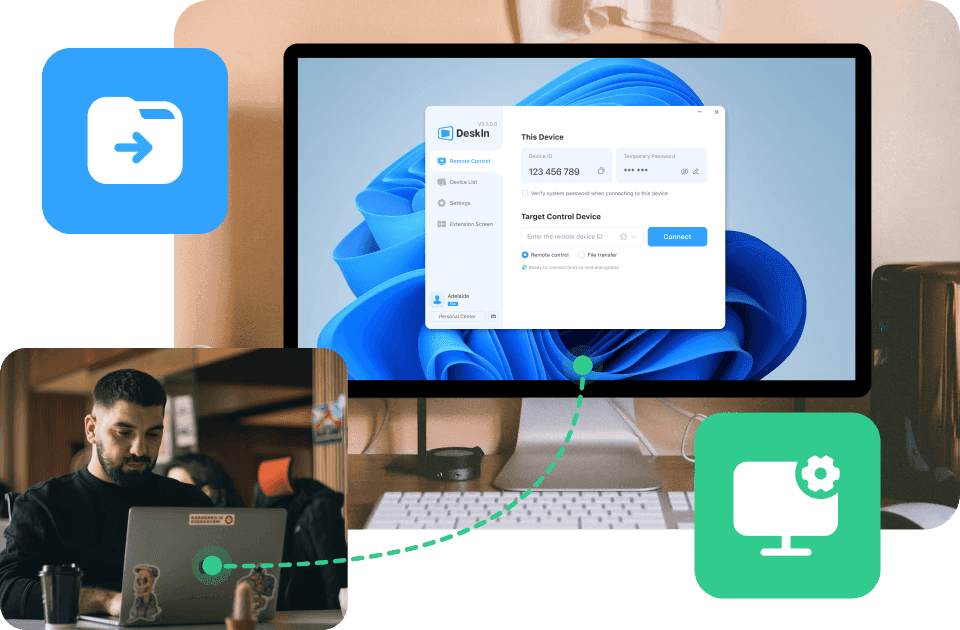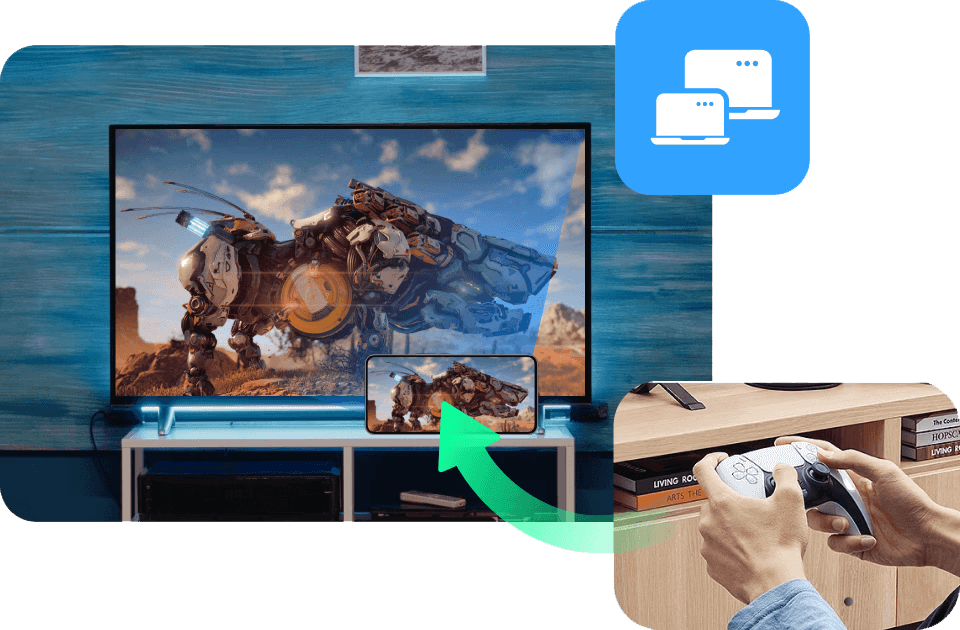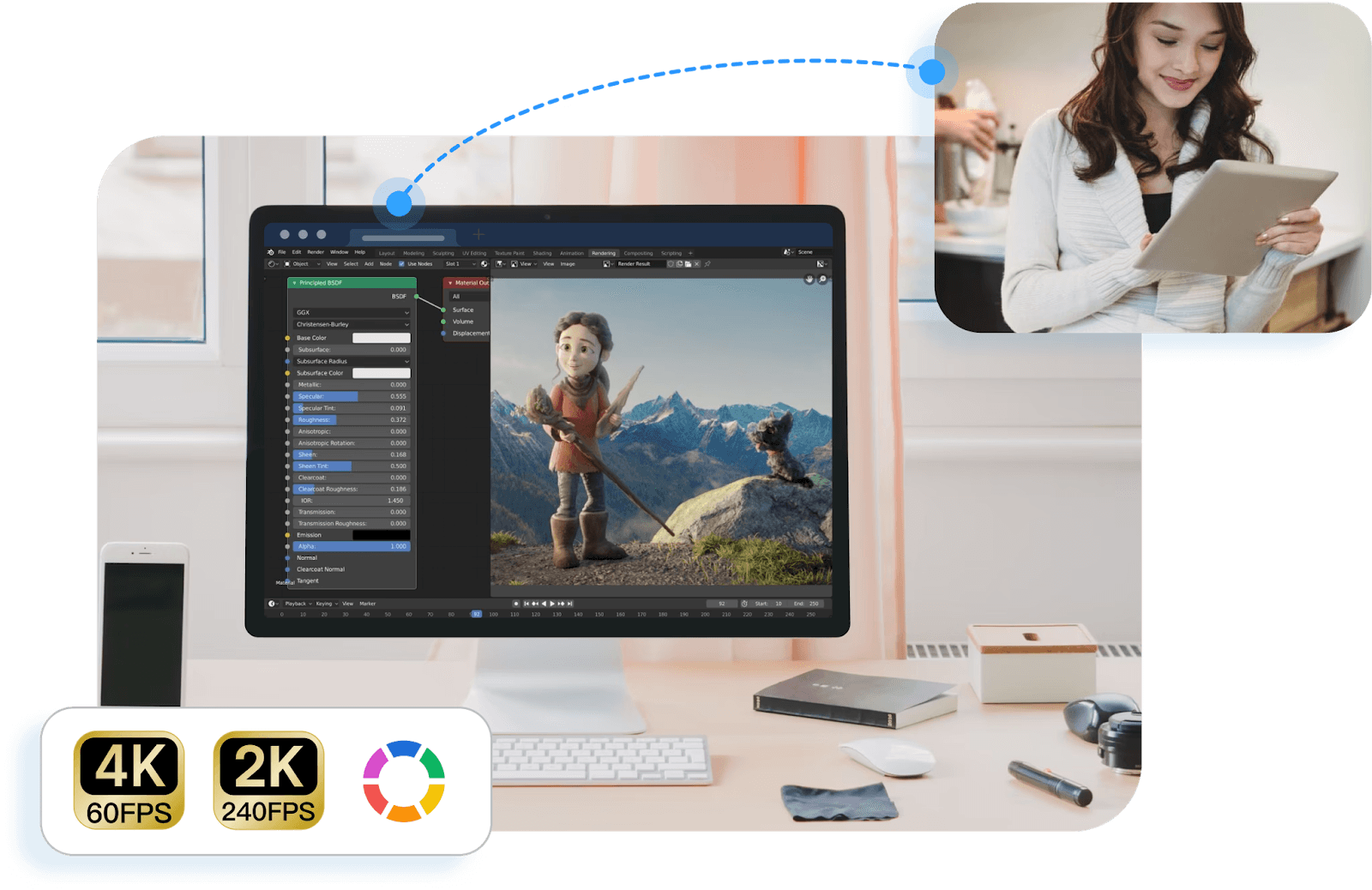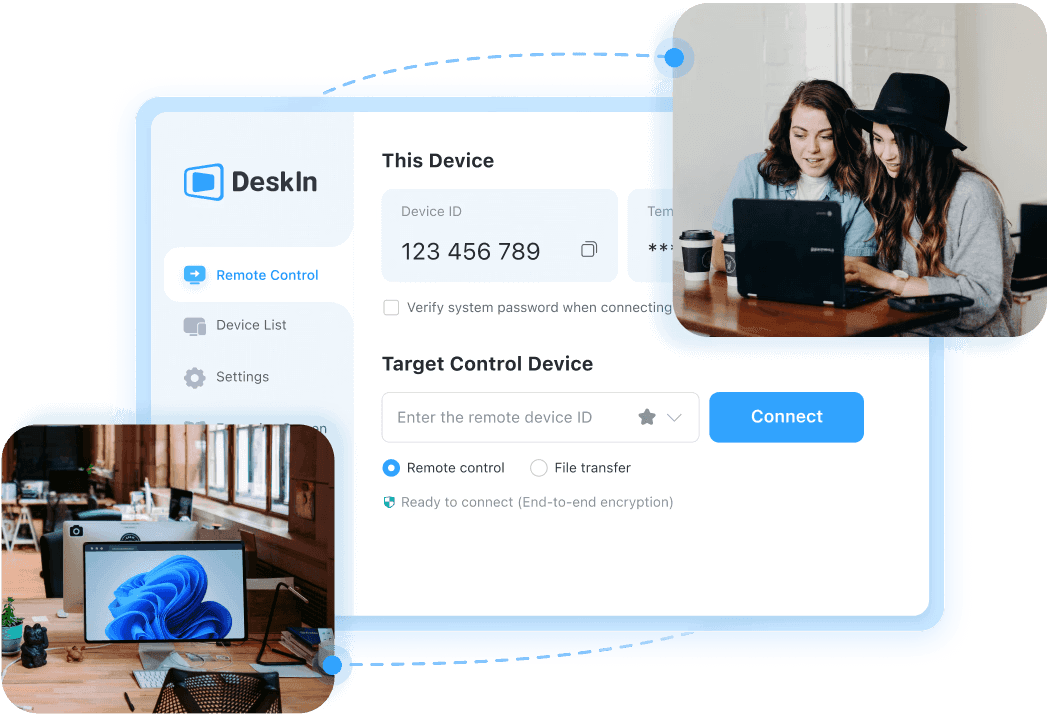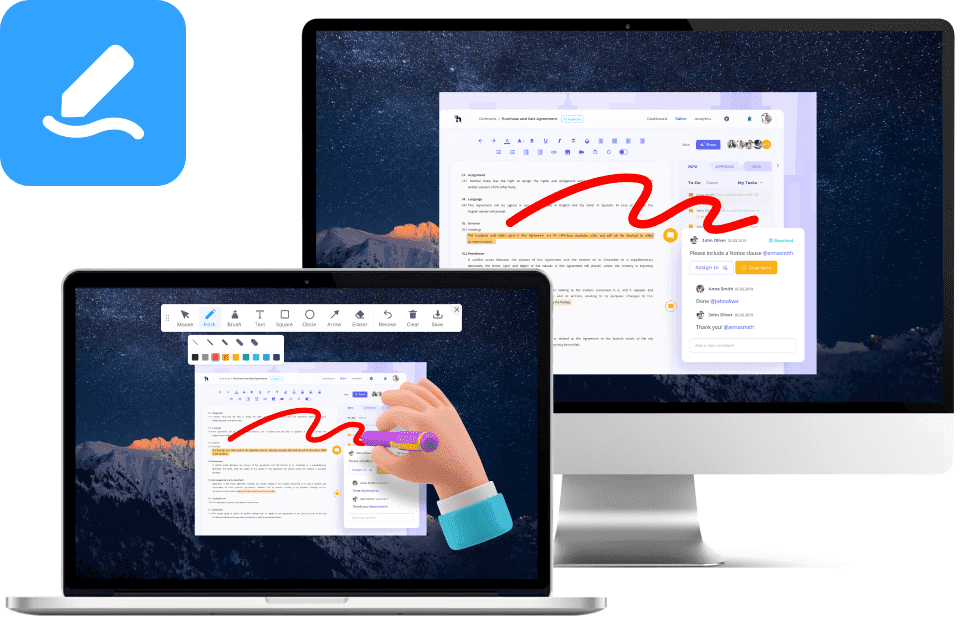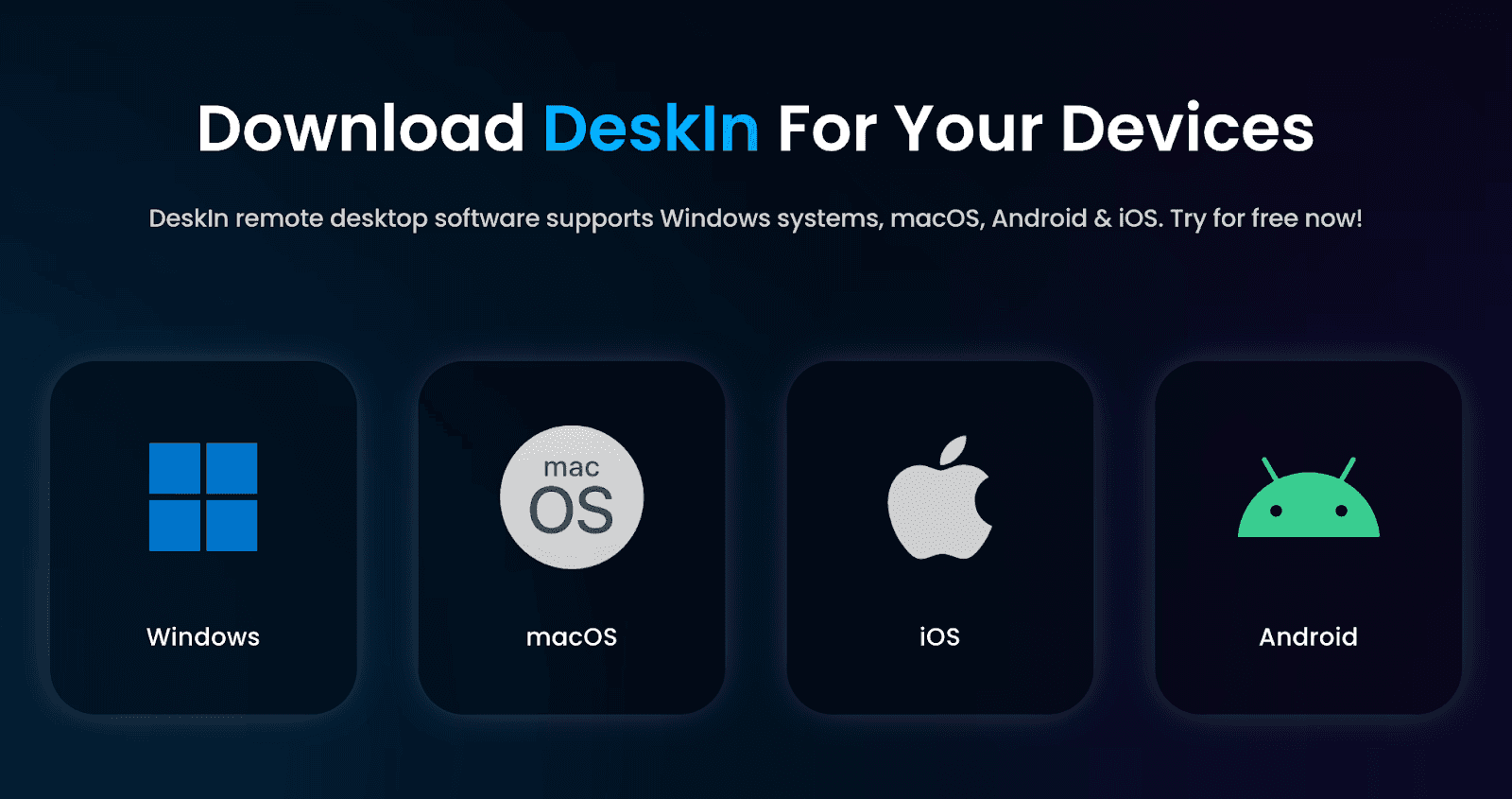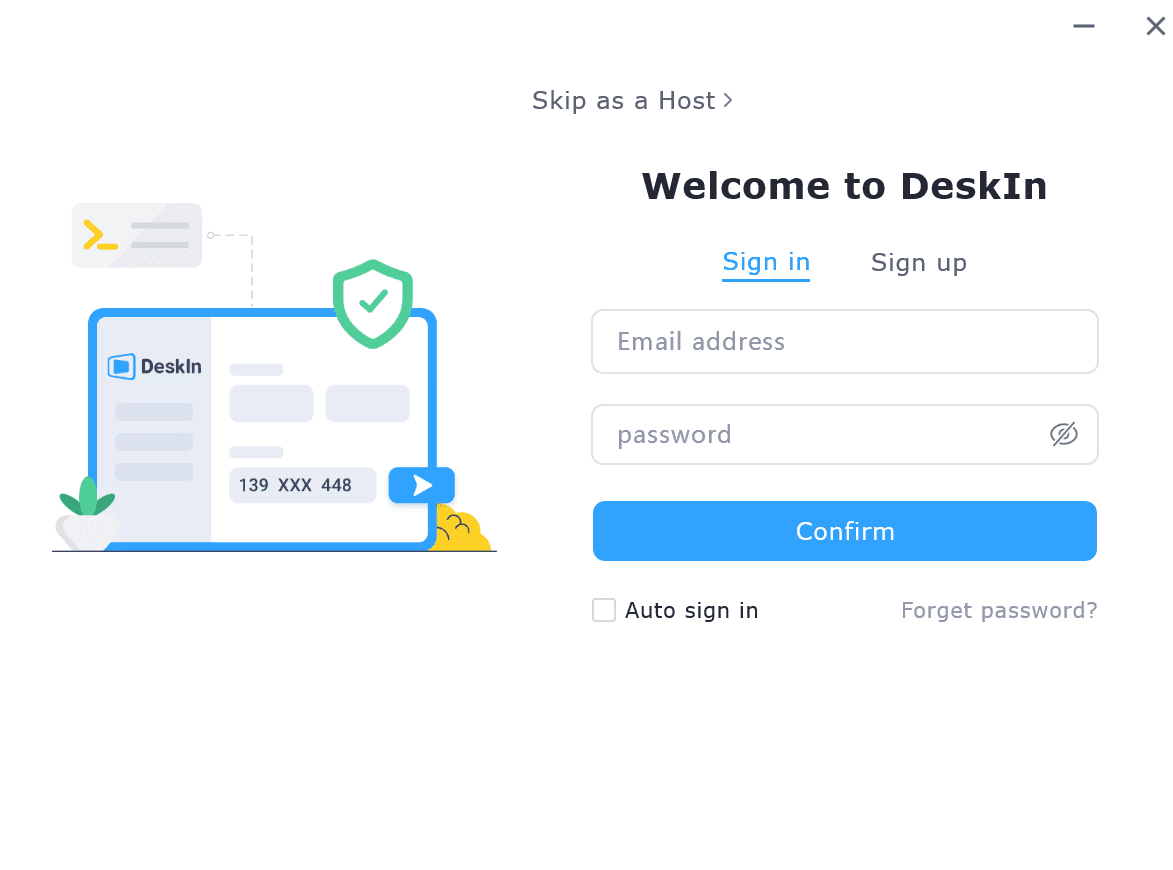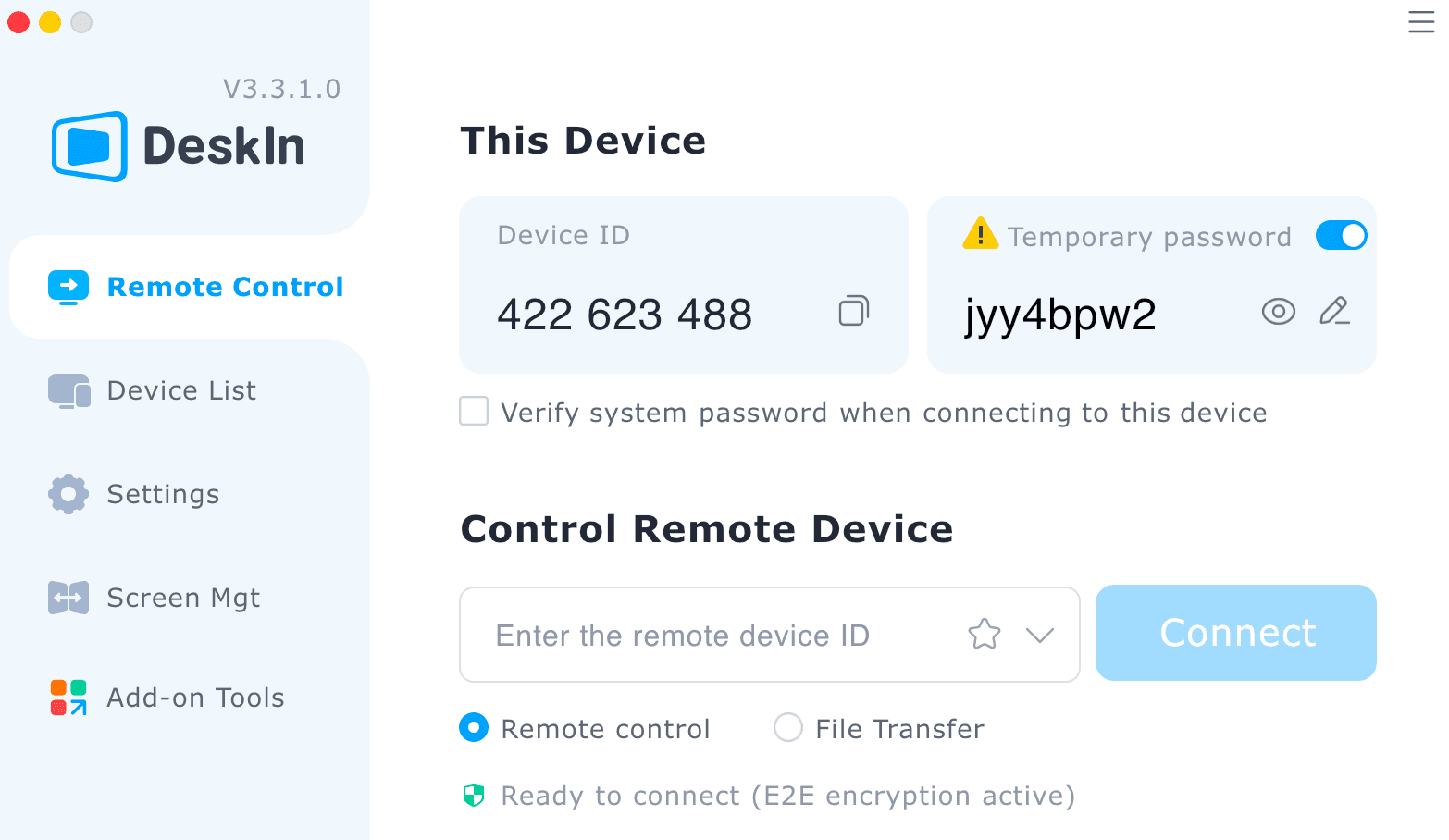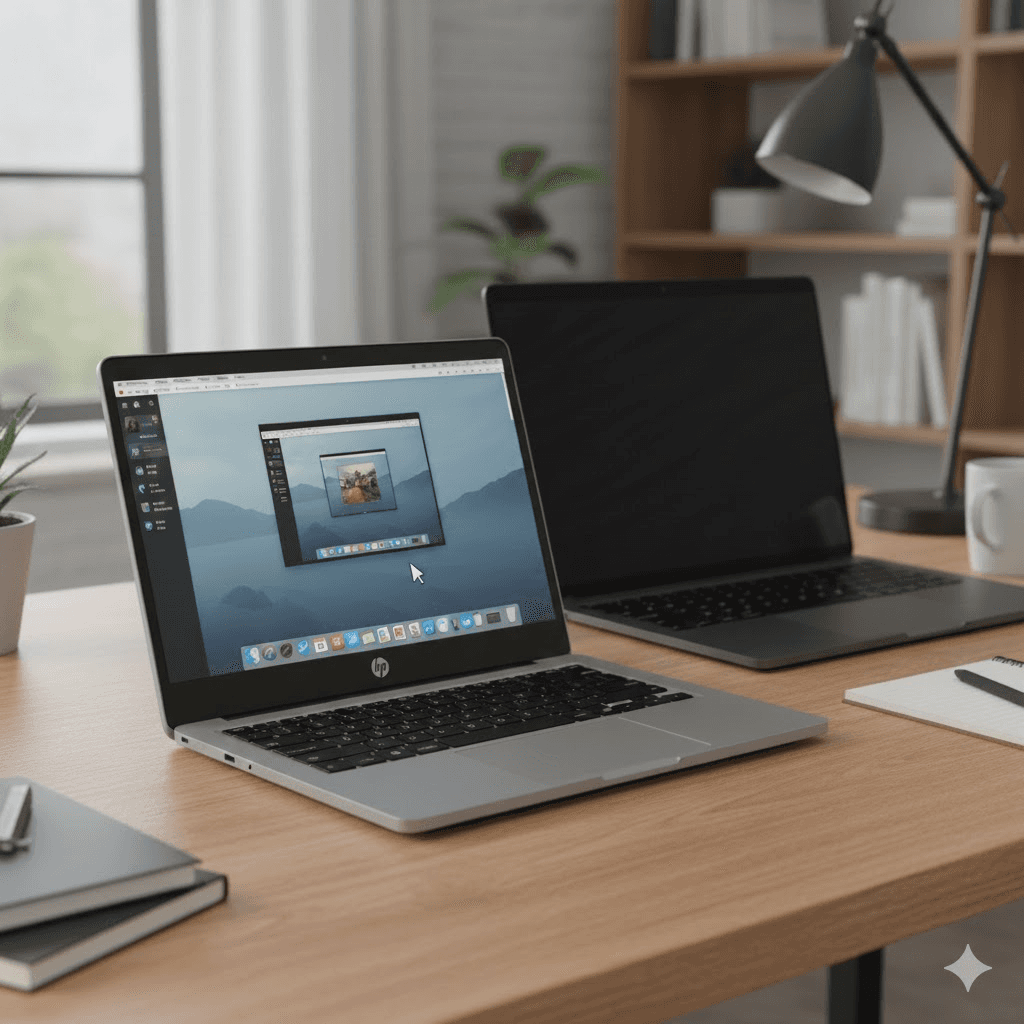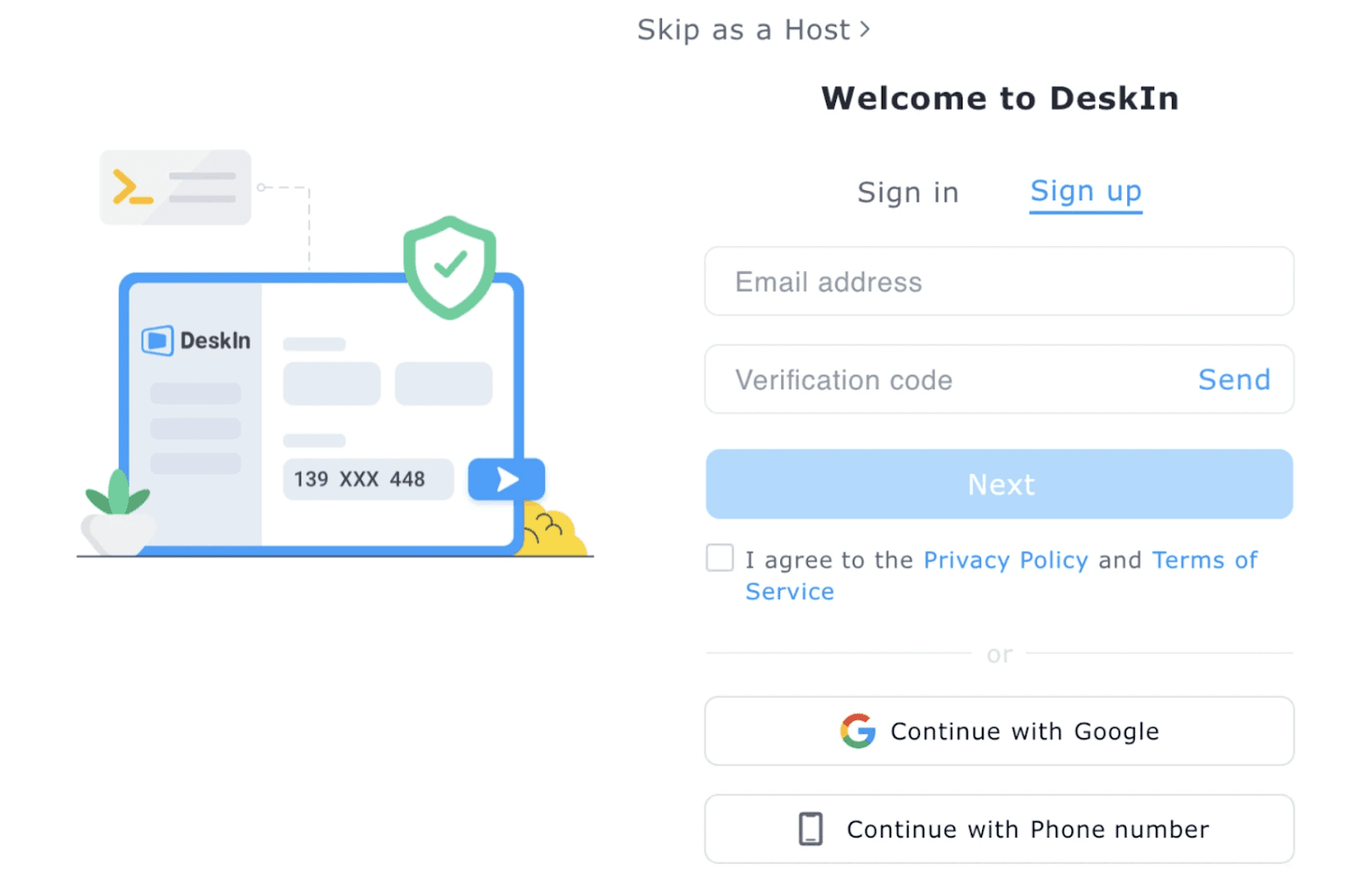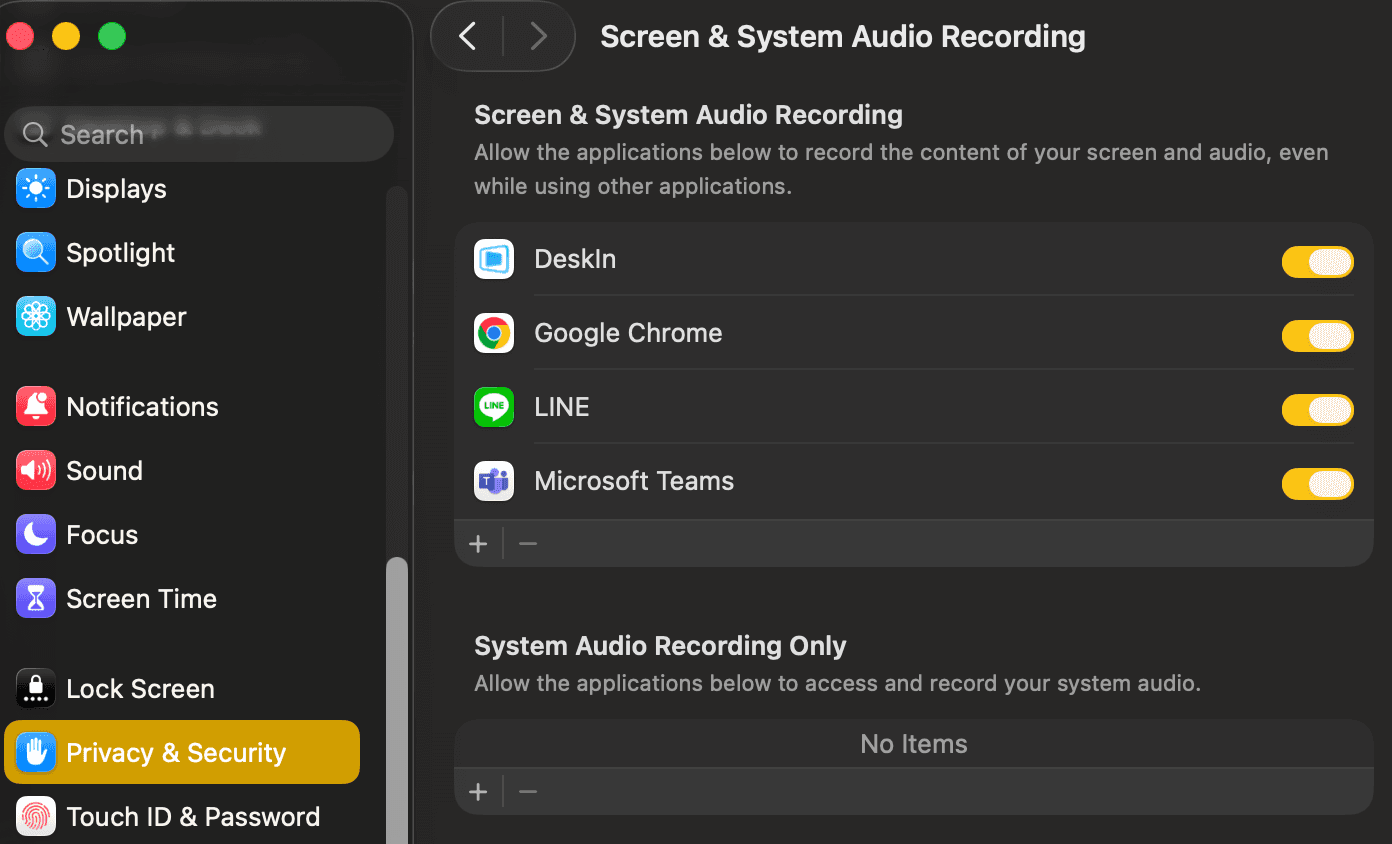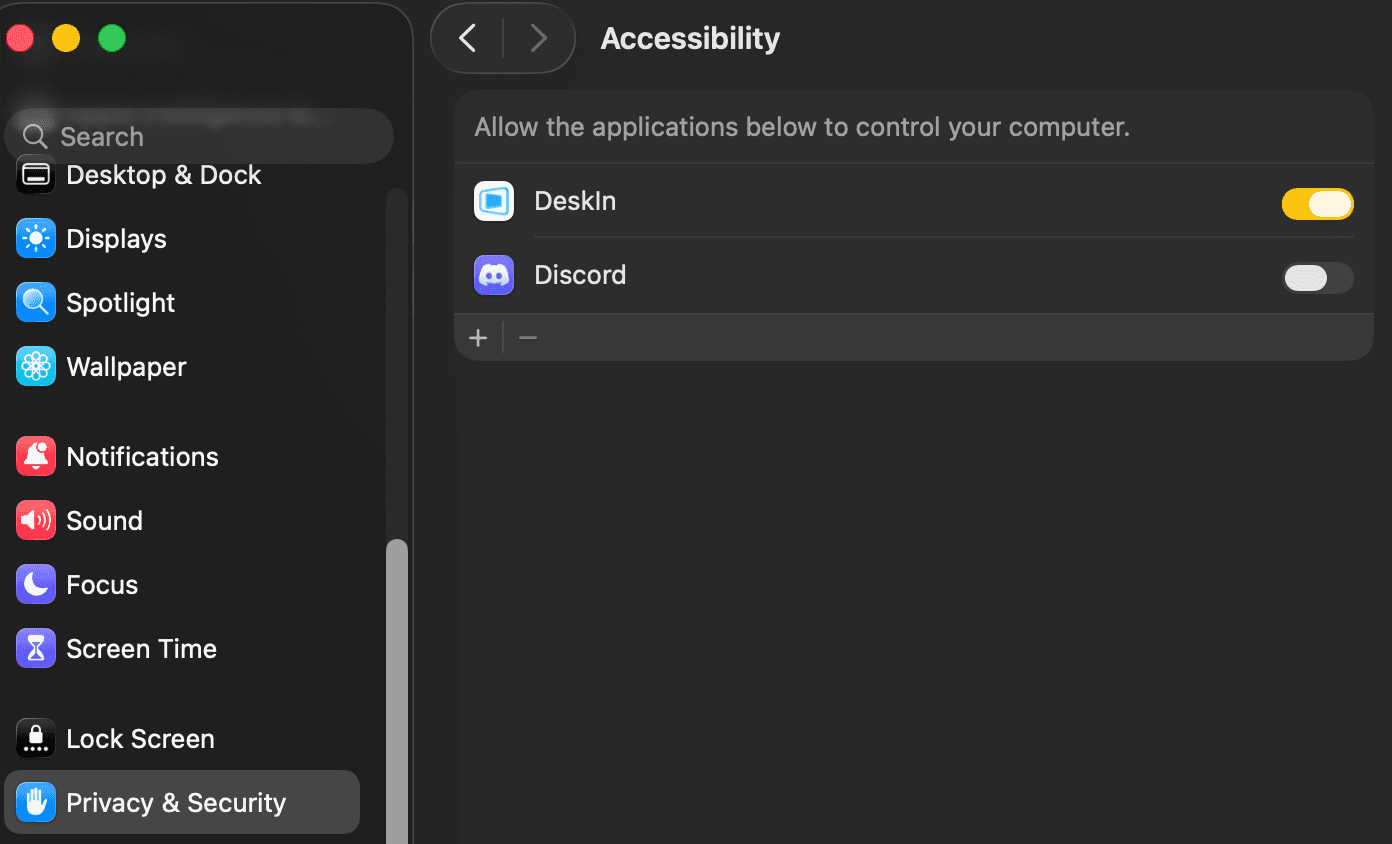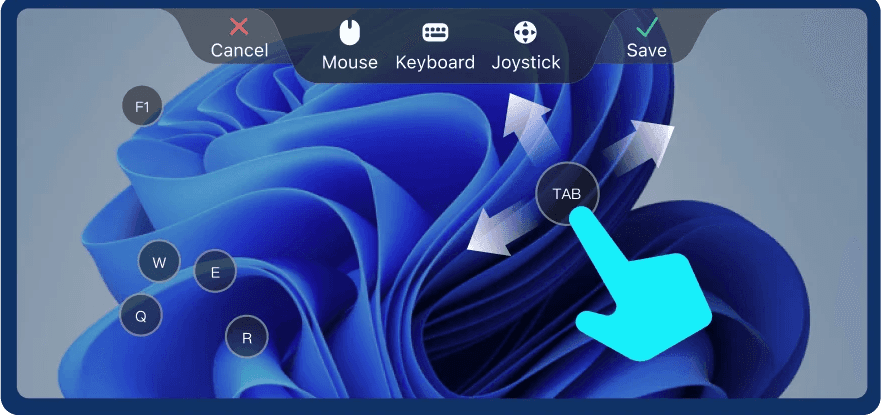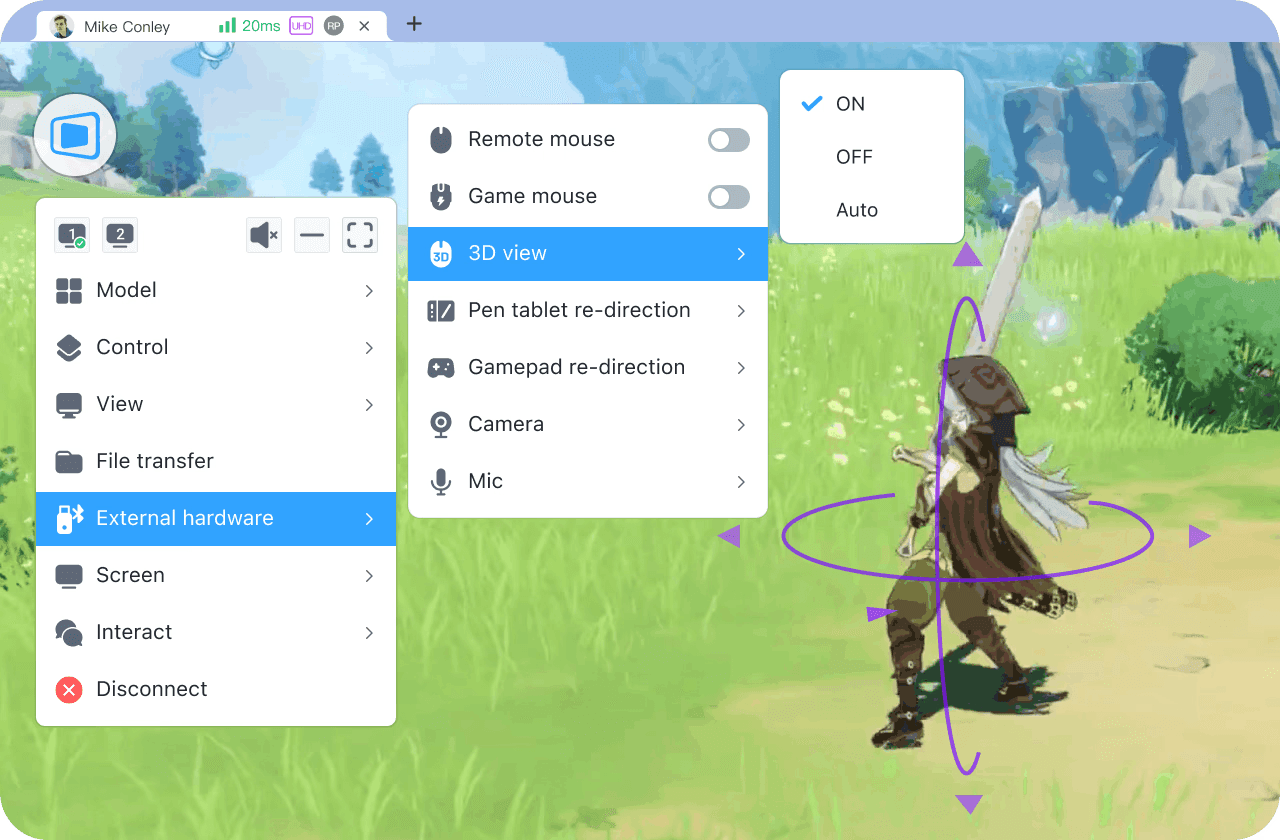AnyDesk is one of the world’s most popular remote desktop tools, known for its high-speed, low-latency cross-device connection experience. However, many users still encounter issues such as AnyDesk not connecting, connection timeout, or DNS address not found, causing interruptions at work, file transfer failures, or delays in remote support.
This article walks you through 9 effective troubleshooting methods, from the simplest to the most advanced, and recommends DeskIn, a more stable and secure alternative to AnyDesk—helping you maintain a smooth remote desktop connection under any circumstances.
If you want to explore more about remote desktop setups, check out these related guides:
Why Is AnyDesk Not Connecting? Common Causes Explained
When you see messages like “Unable to connect,” “Connection timed out,” or “DNS address not found” while using AnyDesk, it’s usually not caused by a single issue. The table below summarizes the most common situations and their likely causes to help you pinpoint the problem quickly:
Problem Type | Main Cause | Corresponding Fix |
1. Network issues | Unstable Wi-Fi, latency, VPN bandwidth usage | ✅ Step 1: Check and reconnect your network |
2. Firewall blockage | AnyDesk ports (7070, 6568) blocked | ✅ Step 2: Allow through firewall |
3. Outdated software | Version incompatibility | ✅ Step 3: Update or reinstall AnyDesk |
4. Incorrect ID | Wrong, changed, or deleted ID | ✅ Step 4: Verify remote device ID |
5. Server issues | AnyDesk servers under maintenance | ✅ Step 5: Check AnyDesk server status |
6. DNS errors | DNS cache or configuration issues | ✅ Step 6: Reset or change DNS |
7. VPN/proxy interference | VPN or proxy bandwidth limits | ✅ Step 7: Disable VPN/proxy |
8. Background conflicts | Antivirus or startup apps interfering | ✅ Step 8: Perform a clean boot |
9. Remote desktop conflict | Other remote control apps running | ✅ Step 9: Close other remote apps |
Too many problems to check one by one?
Download DeskIn — a more stable remote desktop software supporting multi-platform logins and 200+ global nodes to solve all connection problems at once.

Learn more about remote connection setting here:
9 Easy Methods to Fix AnyDesk Connection Problems
If you keep getting “AnyDesk not connecting” or “connection timeout” messages, don’t worry! Below are 9 simple and effective fixes to help you restore your connection—no technical skills required.
Method 1: Check If Your Network Connection Is Stable
One of the most common causes of AnyDesk connection issues is unstable or high-latency internet. Check your connection to ensure proper communication.
Steps:
Press Win + R, type
cmd, and hit Enter.Type
ping -t 8.8.8.8and check response times. If they fluctuate heavily or drop packets, your network is unstable.Use Speedtest to test your internet speed. Try restarting your router or switching to a wired connection for better stability.

If the speed is fine but the connection still fails, proceed with the next steps.
Too much hassle?
Try DeskIn — easy to use, highly stable, and powered by 200+ global nodes for seamless remote access.

Method 2: Allow AnyDesk Through Firewall
Windows Firewall or antivirus software may mistakenly block AnyDesk. If your internet is fine but connections still fail, check your firewall settings.
Steps:
Press Win + S, search for “Allow an app through Windows Firewall.”
Click “Change settings,” locate AnyDesk, and allow both Private and Public networks.
If not listed, click “Allow another app” and manually add the AnyDesk executable.
If you use antivirus software (e.g., Kaspersky, Norton), go to Network Settings > Exceptions and whitelist AnyDesk.
Example (Kaspersky):
Open Kaspersky → click the gear icon for Settings.
Go to Security Settings > Network Settings.
Change “Monitor all ports” to “Monitor only selected network ports.”
Method 3: Update or Reinstall AnyDesk
If you encounter frequent disconnections or timeout errors, the app may be outdated or incompatible with the latest server version. Update or reinstall the latest version.
Steps:
Open AnyDesk → go to Settings > Access > Updates → enable Auto-update.
If updates fail, uninstall the old version and download the latest installer from the official AnyDesk website.

Still not working? Try DeskIn — it’s smoother, more reliable, and offers better multi-platform compatibility.

Method 4: Verify the Remote Device ID
The “Remote device not accepting connection” error often happens due to an incorrect ID. Make sure both sides input the same 9-digit code.
Common mistakes include:
Confusing the number 0 with the letter O
Typing errors or missing segments
Using an old or reset device ID

If you often connect to multiple devices, DeskIn automatically saves all device IDs and allows one-click access—no need to retype.

Method 5: Check AnyDesk Server Status
Sometimes, the issue lies on AnyDesk’s side. Check whether the servers are under maintenance or temporarily down:
Visit Downdetector to see user reports.
Check AnyDesk’s official site for maintenance announcements.

Method 6: Fix “DNS Address Not Found”
If you see “DNS address not found,” it’s usually due to expired DNS cache or proxy misconfiguration.
Steps:
Press Win + S, type
cmd, right-click and select Run as Administrator.Enter these commands one by one:
ipconfig /releaseipconfig /renewipconfig /flushdnsRestart AnyDesk and test the connection again.
Method 7: Disable VPN or Proxy
VPNs and proxies (especially HiNet proxies) can slow down or block AnyDesk.
Steps:
Temporarily disable VPN software (like Surfshark or ExpressVPN).
Check Windows proxy settings: Press Win + R → type
inetcpl.cpl→ switch to the “Connections” tab, and verify whether the proxy is enabled.Switch to DNS settings recommended by your local network provider.
Or just use DeskIn — it automatically optimizes global routing with no VPN issues.

Method 8: Perform a Clean Boot to Avoid Conflicts
Background processes or antivirus programs can interfere with AnyDesk.
Steps:
Press Win + R, type
msconfig, and hit Enter.Under the General tab, select Selective startup, and uncheck “Load startup items.”
Go to Services, check “Hide all Microsoft services,” then click “Disable all.”
Restart your PC and test AnyDesk again. If you use antivirus software, temporarily disable it and ensure it’s fully closed in Task Manager.
Method 9: Close Other Remote Desktop Apps
Running multiple remote control tools (e.g., TeamViewer, Chrome Remote Desktop) may cause conflicts. Disable or uninstall other apps to prevent connection failures. ou can also try disabling IPv6 (some ISPs cause issues):
Go to Control Panel → Network and Internet → Network Connections.
Right-click your active adapter → Properties → uncheck “Internet Protocol Version 6 (TCP/IPv6).”
Restart your PC.
A More Stable & Faster Alternative — DeskIn
If you’re tired of AnyDesk connection failures, laggy visuals, or blurry screen sharing, try DeskIn — a reliable, high-performance remote desktop software.
DeskIn features 200+ global nodes, intelligent routing, and 4K60FPS / 2K144FPS streaming with <40ms latency. It’s free, multi-platform, and includes premium features like:
Remote startup/shutdown
Voice chat
Screen extension & projection
Privacy mode
Mobile and web access
DeskIn offers multiple advanced features for free, providing a more stable connection experience and complete cross-platform support than AnyDesk — making it the ideal choice for long-term remote control.
3 easy steps:
Install DeskIn on both computers (Windows/macOS) and log in with the same account.


Select a device from your list → click Remote Control.

Transfer files, share screens, or make calls during the session.

FAQ — Key Troubleshooting Points
Why does it say “Remote device not accepting connection”?
Usually due to incorrect ID, insufficient permissions, or firewall blocks. Check network settings or switch to DeskIn for instant, hassle-free access.
AnyDesk not working on iPhone?
This may be due to unstable Wi-Fi, outdated app, or system compatibility issues. Restart, update, or use DeskIn for smoother iOS performance.
What other remote desktop apps can I use?
Alternatives include TeamViewer and Chrome Remote Desktop, but DeskIn provides a smoother, higher-quality experience with fewer restrictions.
How to prevent connection issues in the future?
Keep your software updated, ensure stable internet, and configure your firewall properly. Or, simply use DeskIn — it’s stable, secure, and easy to use.
Conclusion: The Fastest, Simplest Way to Fix AnyDesk Connection Issues
This guide covered 9 simple, effective methods to fix AnyDesk connection failures—from checking network status and updating software to disabling VPN and IPv6.
If you prefer a simpler, more reliable solution, DeskIn is the best choice. It’s intuitive, stable, and supports multiple platforms—perfect for remote work, teaching, or collaboration.
👉 Try DeskIn now and enjoy a smoother, safer remote desktop experience.

AnyDesk is one of the world’s most popular remote desktop tools, known for its high-speed, low-latency cross-device connection experience. However, many users still encounter issues such as AnyDesk not connecting, connection timeout, or DNS address not found, causing interruptions at work, file transfer failures, or delays in remote support.
This article walks you through 9 effective troubleshooting methods, from the simplest to the most advanced, and recommends DeskIn, a more stable and secure alternative to AnyDesk—helping you maintain a smooth remote desktop connection under any circumstances.
If you want to explore more about remote desktop setups, check out these related guides:
Why Is AnyDesk Not Connecting? Common Causes Explained
When you see messages like “Unable to connect,” “Connection timed out,” or “DNS address not found” while using AnyDesk, it’s usually not caused by a single issue. The table below summarizes the most common situations and their likely causes to help you pinpoint the problem quickly:
Problem Type | Main Cause | Corresponding Fix |
1. Network issues | Unstable Wi-Fi, latency, VPN bandwidth usage | ✅ Step 1: Check and reconnect your network |
2. Firewall blockage | AnyDesk ports (7070, 6568) blocked | ✅ Step 2: Allow through firewall |
3. Outdated software | Version incompatibility | ✅ Step 3: Update or reinstall AnyDesk |
4. Incorrect ID | Wrong, changed, or deleted ID | ✅ Step 4: Verify remote device ID |
5. Server issues | AnyDesk servers under maintenance | ✅ Step 5: Check AnyDesk server status |
6. DNS errors | DNS cache or configuration issues | ✅ Step 6: Reset or change DNS |
7. VPN/proxy interference | VPN or proxy bandwidth limits | ✅ Step 7: Disable VPN/proxy |
8. Background conflicts | Antivirus or startup apps interfering | ✅ Step 8: Perform a clean boot |
9. Remote desktop conflict | Other remote control apps running | ✅ Step 9: Close other remote apps |
Too many problems to check one by one?
Download DeskIn — a more stable remote desktop software supporting multi-platform logins and 200+ global nodes to solve all connection problems at once.

Learn more about remote connection setting here:
9 Easy Methods to Fix AnyDesk Connection Problems
If you keep getting “AnyDesk not connecting” or “connection timeout” messages, don’t worry! Below are 9 simple and effective fixes to help you restore your connection—no technical skills required.
Method 1: Check If Your Network Connection Is Stable
One of the most common causes of AnyDesk connection issues is unstable or high-latency internet. Check your connection to ensure proper communication.
Steps:
Press Win + R, type
cmd, and hit Enter.Type
ping -t 8.8.8.8and check response times. If they fluctuate heavily or drop packets, your network is unstable.Use Speedtest to test your internet speed. Try restarting your router or switching to a wired connection for better stability.

If the speed is fine but the connection still fails, proceed with the next steps.
Too much hassle?
Try DeskIn — easy to use, highly stable, and powered by 200+ global nodes for seamless remote access.

Method 2: Allow AnyDesk Through Firewall
Windows Firewall or antivirus software may mistakenly block AnyDesk. If your internet is fine but connections still fail, check your firewall settings.
Steps:
Press Win + S, search for “Allow an app through Windows Firewall.”
Click “Change settings,” locate AnyDesk, and allow both Private and Public networks.
If not listed, click “Allow another app” and manually add the AnyDesk executable.
If you use antivirus software (e.g., Kaspersky, Norton), go to Network Settings > Exceptions and whitelist AnyDesk.
Example (Kaspersky):
Open Kaspersky → click the gear icon for Settings.
Go to Security Settings > Network Settings.
Change “Monitor all ports” to “Monitor only selected network ports.”
Method 3: Update or Reinstall AnyDesk
If you encounter frequent disconnections or timeout errors, the app may be outdated or incompatible with the latest server version. Update or reinstall the latest version.
Steps:
Open AnyDesk → go to Settings > Access > Updates → enable Auto-update.
If updates fail, uninstall the old version and download the latest installer from the official AnyDesk website.

Still not working? Try DeskIn — it’s smoother, more reliable, and offers better multi-platform compatibility.

Method 4: Verify the Remote Device ID
The “Remote device not accepting connection” error often happens due to an incorrect ID. Make sure both sides input the same 9-digit code.
Common mistakes include:
Confusing the number 0 with the letter O
Typing errors or missing segments
Using an old or reset device ID

If you often connect to multiple devices, DeskIn automatically saves all device IDs and allows one-click access—no need to retype.

Method 5: Check AnyDesk Server Status
Sometimes, the issue lies on AnyDesk’s side. Check whether the servers are under maintenance or temporarily down:
Visit Downdetector to see user reports.
Check AnyDesk’s official site for maintenance announcements.

Method 6: Fix “DNS Address Not Found”
If you see “DNS address not found,” it’s usually due to expired DNS cache or proxy misconfiguration.
Steps:
Press Win + S, type
cmd, right-click and select Run as Administrator.Enter these commands one by one:
ipconfig /releaseipconfig /renewipconfig /flushdnsRestart AnyDesk and test the connection again.
Method 7: Disable VPN or Proxy
VPNs and proxies (especially HiNet proxies) can slow down or block AnyDesk.
Steps:
Temporarily disable VPN software (like Surfshark or ExpressVPN).
Check Windows proxy settings: Press Win + R → type
inetcpl.cpl→ switch to the “Connections” tab, and verify whether the proxy is enabled.Switch to DNS settings recommended by your local network provider.
Or just use DeskIn — it automatically optimizes global routing with no VPN issues.

Method 8: Perform a Clean Boot to Avoid Conflicts
Background processes or antivirus programs can interfere with AnyDesk.
Steps:
Press Win + R, type
msconfig, and hit Enter.Under the General tab, select Selective startup, and uncheck “Load startup items.”
Go to Services, check “Hide all Microsoft services,” then click “Disable all.”
Restart your PC and test AnyDesk again. If you use antivirus software, temporarily disable it and ensure it’s fully closed in Task Manager.
Method 9: Close Other Remote Desktop Apps
Running multiple remote control tools (e.g., TeamViewer, Chrome Remote Desktop) may cause conflicts. Disable or uninstall other apps to prevent connection failures. ou can also try disabling IPv6 (some ISPs cause issues):
Go to Control Panel → Network and Internet → Network Connections.
Right-click your active adapter → Properties → uncheck “Internet Protocol Version 6 (TCP/IPv6).”
Restart your PC.
A More Stable & Faster Alternative — DeskIn
If you’re tired of AnyDesk connection failures, laggy visuals, or blurry screen sharing, try DeskIn — a reliable, high-performance remote desktop software.
DeskIn features 200+ global nodes, intelligent routing, and 4K60FPS / 2K144FPS streaming with <40ms latency. It’s free, multi-platform, and includes premium features like:
Remote startup/shutdown
Voice chat
Screen extension & projection
Privacy mode
Mobile and web access
DeskIn offers multiple advanced features for free, providing a more stable connection experience and complete cross-platform support than AnyDesk — making it the ideal choice for long-term remote control.
3 easy steps:
Install DeskIn on both computers (Windows/macOS) and log in with the same account.


Select a device from your list → click Remote Control.

Transfer files, share screens, or make calls during the session.

FAQ — Key Troubleshooting Points
Why does it say “Remote device not accepting connection”?
Usually due to incorrect ID, insufficient permissions, or firewall blocks. Check network settings or switch to DeskIn for instant, hassle-free access.
AnyDesk not working on iPhone?
This may be due to unstable Wi-Fi, outdated app, or system compatibility issues. Restart, update, or use DeskIn for smoother iOS performance.
What other remote desktop apps can I use?
Alternatives include TeamViewer and Chrome Remote Desktop, but DeskIn provides a smoother, higher-quality experience with fewer restrictions.
How to prevent connection issues in the future?
Keep your software updated, ensure stable internet, and configure your firewall properly. Or, simply use DeskIn — it’s stable, secure, and easy to use.
Conclusion: The Fastest, Simplest Way to Fix AnyDesk Connection Issues
This guide covered 9 simple, effective methods to fix AnyDesk connection failures—from checking network status and updating software to disabling VPN and IPv6.
If you prefer a simpler, more reliable solution, DeskIn is the best choice. It’s intuitive, stable, and supports multiple platforms—perfect for remote work, teaching, or collaboration.
👉 Try DeskIn now and enjoy a smoother, safer remote desktop experience.






